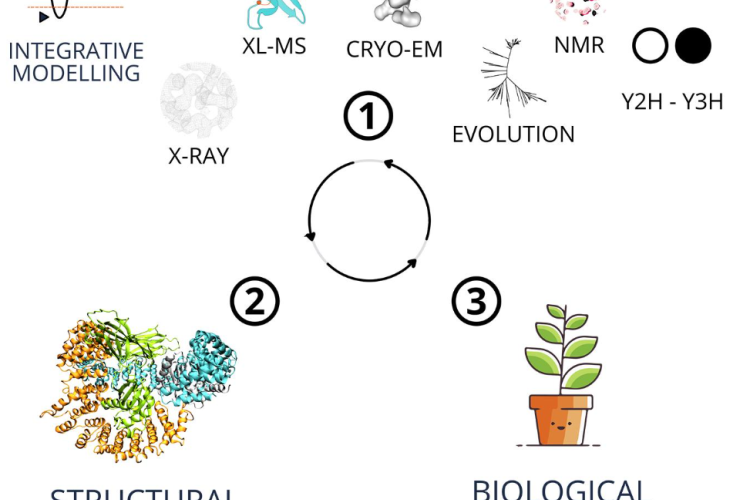Structure elucidation remains a crucial step towards understanding protein structure-function relationships at the molecular level. As such, structural studies are key in our understanding of conformational changes, binding epitopes and mode of interaction with binding partners.
Diving into the molecular architecture of multi-subunit complexes involved in trafficking such as the TPLATE complex, can shed new light into their role in these processes. To achieve structural and mechanistic cognizance of these complexes, we use integrative multi-parametric structural biology approaches that make use of genetic, molecular and biochemical toolboxes. We combine different structural biology techniques such as Cross-Linking Mass Spectrometry (XL-MS), Negative-Stain Electron Microscopy (Ns-EM), Cryogenic Electron Microscopy (Cryo-EM) and computational modelling (such as AlphaFold) to generate integrative structural models. The ultrastructural insights derived from these models fuel our understanding of the biological relevance of such complexes. Thanks to the accessibility to stablished model systems (e.g. A. thaliana and N. benthamiana) and live-cell imaging, we can further validate the biological information inferred from these structural insights while new hypothesis that require further structural data keep emerging. This iterative approach takes us, step by step, closer to unravelling the complex processes involved in plant cellular communication.
